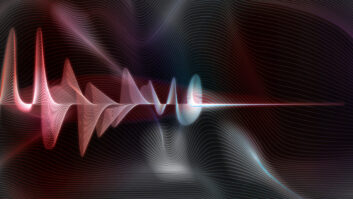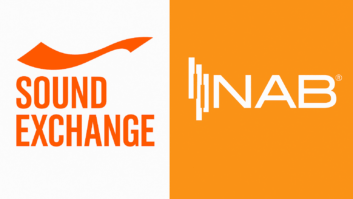Good evening, ladies and gentlemen. This is radio station WBKY, Beattyville, Ky., owned by the University of Kentucky and operated in cooperation with the Lee County Board of Education, broadcasting tonight for the first time on a federally authorized frequency of 42,900 kilocycles. This initial program tonight over WBKY heralds a significant occasion and marks the fruition of plans that have been formulated and carried to completion during the past few years.
With those words, solemnly intoned by announcer Wayne Howell, a new radio service was born at precisely 7:30 p.m. on Oct. 17, 1940. A heady start indeed, though there was one small problem: The inaugural broadcast was heard only by a handful of Lee County residents who crowded into the auditorium that evening because no radios capable of receiving the station’s experimental “shortwave” signals were yet available.
How a tiny, 100-watt AM station in a remote region of Kentucky became the radio voice of the University of Kentucky is a tale of the perseverance and dedication of many broadcasters against often overwhelming odds.
By the time WBKY signed on in 1940, the University of Kentucky had been producing radio programs in Lexington for over a decade. Shortly before the 1929 stock market crash, the University of Kentucky’s Elmer “Bromo” Sulzer approached Credo Harris, the general manager of Louisville powerhouse WHAS, and Sulzer offered to produce regular educational programs for WHAS and send them to Louisville via telephone line.
Harris agreed without hesitation, so existing facilities within the school of music were quickly pressed into action. An instrument storage room doubled as master control and the band room became the main studio. No wonder Sulzer was relieved a decade later when he identified an unwanted cafeteria on campus that he could transform into a somewhat more permanent radio facility. That space, on the top floor of McVey Hall, remains WUKY’s home today.
PROGRAMMING
During the 1930s, Sulzer oversaw a radio operation that produced five educational and three musical programs weekly. Years later, he recalled, “Our education programs, if I say so myself, were pretty blame good!”
These shows aired at noon and ranged from “Animal Friends and Enemies” to a discussion of cesspools that WHAS’s lunchtime audience found particularly unpalatable. Musical programs featured a variety of genres, including Hawaiian, big band and Hillbilly.
Photo courtesy University of Kentucky “[Our] three studios were mighty busy in those days,” Sulzer said. “One studio might be putting on an agricultural program for WHAS, our orchestra would be rehearsing for a program for coast-to-coast mutual in our biggest studio, and a dramatic group would be going in our other studio, possibly to a local station.”
Around this time, First Lady Eleanor Roosevelt visited campus. Sulzer arranged a 30-minute broadcast with her for WHAS. Because she had a luncheon engagement immediately before the program, Sulzer worried that Mrs. Roosevelt might be late to arrive. So he invited music professor and dean of America’s balladeers John Jacob Niles to fill the airtime, if necessary. Roosevelt arrived just moments after the broadcast had begun. Alas, by then Niles had already launched into his rendition of “Barbara Allen” — all seventeen verses — and he was not about to cut it short, even for so distinguished a guest. Later when asked why he refused to yield the stage he replied curtly, “Do you realize that long after Eleanor Roosevelt’s words are forgotten, my mountain ballads will still be sung all over the world?”
TRAILBLAZER
In 1938, Sulzer met Ruth Foxx, a sophomore at the University of Louisville. She was, by any standard, a formidable young lady. While still a student, she began producing programs for WHAS. Her assignment was to profile a different department at the university each week.
In due course, she came to the segregated university’s Negro Municipal College. According to Foxx, “I took them in one night to WHAS to rehearse, and I did not know that this was the first time black people had been inside the studios of WHAS.”
Credo Harris called her into his office the following morning. He told her that his announcers were threatening to strike, and she would have to cancel the broadcast. Foxx had in her hand a copy of Harris’s latest book. She told Harris in no uncertain terms, “I brought it with me for you to autograph, but if you’re not going to let my students come in here this afternoon, I don’t want your autograph!” Harris threw his head back, laughed and said, “Give me that book! I’ll sign it.” Foxx’s program aired as scheduled.
Upon her graduation from U of L, Sulzer tapped Foxx to run WBKY at a salary of $80 per month. By contrast, teachers in Lee County earned only $72. Sulzer intended for WBKY to be the first in a chain of stations across eastern Kentucky providing educational programming, each tailored for the specific needs of its community. Unfortunately, this ambitious plan was never realized.
THE A-3 EXPERIMENT
For WBKY, however, the time was right. The FCC had just designated a new band (42-50 MHz) for experimental FM and wide-band Apex AM broadcasting. Further, the commission had set aside a portion of the band for what they called “Non-Commercial Educational” broadcasting. School boards in Cleveland and New York quickly licensed stations. WBKY was next in line, and thus UK became the first university to obtain an NCE license.
A bit of myth-busting is necessary here; WBKY is not, as sometimes reported, the first university-owned FM station. Copies of the 1940 construction permit and the 1941 FCC license verify that the transmitter’s type of emission was “A-3” (i.e. Amplitude Modulation).
“At the time I moved to Lee County,” Foxx wrote in “Public Telecommunication Review” Sept.–Oct., 1979, “it was rated a pauper county … Farming, the chief industry, consisted of attempting to grow crops in light, thin soil on hillsides which constantly eroded with the weather. In an area of 199 square miles, there was a total population of 9,600 … [There were] 56 schools; 54 were without electricity.”
Despite grinding poverty and treacherous terrain, volunteers flocked to the station to present daily newscasts, agricultural programs, radio dramas, and religious talks. “Everybody pitched in,” said Foxx. She never had the heart to tell them no one was listening. Receivers, built at Sulzer’s behest by high school and college students working for the National Youth Administration, were late to arrive and never did work properly. Ultimately, the Lee County school board decided that Foxx’s salary could be put to better use by hiring school bus drivers. According to Foxx, WBKY “ended its last day of broadcasting” on Friday, June 27, 1941.
WAR-TIME BROADCASTS
Not quite. Sulzer had other plans and somehow kept the station going, despite Foxx’s untimely departure. That year Sulzer won a Peabody Award for a series on a very controversial topic: venereal disease. The show was quickly banned from all Kentucky radio stations. There is no record as to whether it aired on WBKY before the ban. In February 1942, Broadcasting Magazine reported that WBKY’s newly announced program schedule placed “strong emphasis on morale, Western Hemisphere appreciation and educational phases aimed to assist in the war effort.” Meanwhile, interest in and ratings of UK-produced educational programming on WHAS were beginning to wane, and it was time for bold action.
The station limped along until April 1944, when Sulzer persuaded UK President Herman Lee Donovan to recommend dismantling WBKY, which had “served its purpose,” moving it to Lexington and at long last applying for an FM license. The proposal was unanimously adopted by the board of trustees, who allocated a whopping $5,000 — equivalent to nearly $70,000 today — for the move. Wartime shortages undoubtedly slowed the process, and the move was not completed until the following spring, just as World War II was winding to a close.
In May 1945, WBKY’s Production Director Casey Russell was monitoring European shortwave for news and recording soundbites on 16-inch transcription discs. Just as she dropped the needle on that fateful day, she heard Winston Churchill say “My friends, the war is over!” Churchill’s words were quickly put on the air. Broadcasting Magazine reported a similar effort in September when WBKY once again “scanned the shortwaves for news from all over the world” and “went on 24-hour duty for five days … beginning with the first news-flash of the Jap surrender.”
FM TRANSITION
Uncertain about what to do with the FM band after the war, the FCC first moved WBKY from its original frequency to 44.3 MHz. Then in January 1947, WBKY was assigned its permanent dial position at 91.3 on the brand-new “high” FM band. At the same time, the station’s power was doubled to 1 kW.
Undaunted by shortages of funds and supplies, Sulzer sprang into action. He persuaded graduate student James Hisle to design and build the new transmitter as his Master’s thesis.
“I think we had to plunk out about $300 in parts,” Sulzer recalled years later. The antenna, built by a friendly chief engineer at Lexington’s WLAP(AM), added another $200 or so to the budget, and the tower was scrounged from the Lexington Police Department.
“The transmission line we fabricated ourselves, using as an outer conductor hard copper refrigerator tubing and buying from the American Lava Company down in Chattanooga the little circular insulators that we put in every foot or something like that,” said Sulzer. The total cost was “something less than a thousand dollars.”
By contrast, Sulzer reported, a comparable system at the University of Michigan (WUOM) had cost $80,000 to construct.
Four months later, the station became one of seven non-commercial FM affiliates of the Mutual Broadcasting Service, although the university had been supplying programs to the network since the 1930s. Local programming on the station grew slowly over time. Sulzer: “We started adding 30 minutes here and there as we could con students into doing the work and as the university gave us a little more money — and as, which is more important, the number of FM sets proliferated in the area.”
Sulzer left the University of Kentucky in 1952. While some lamented the end of the station’s “Golden Era,” WBKY continued to grow. A series of programs in 1953 focused on weaknesses in Kentucky’s education system; these led to an amendment to the state’s constitution. As late as 1962, WBKY was still airing university courses, including “Kentucky History” with historian and Kentucky Writers Hall of Fame author Dr. Thomas D. Clark.
Today the station is poised to begin a new era. Earlier this year, the University of Kentucky received the generous gift of a building, which will soon become the first new home for WUKY since 1939. The St. Claire Studio in Lexington was designed by Pilchner Schoustal International in 2004. Alejandro Escovedo, Willy Porter and others made records there, and by the summer of 2016 WUKY will be fully operational at the new site.
Tom Godell has been the general manager of WUKY since 2004. He is a 40-year veteran of public radio and has written extensively on classical music.







